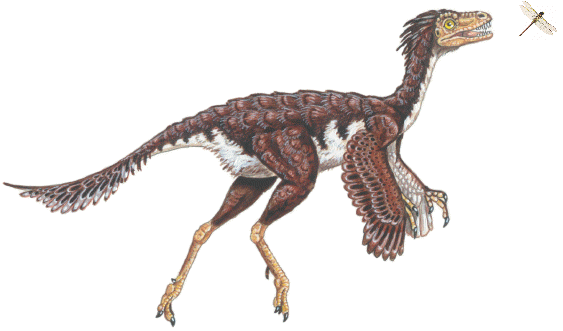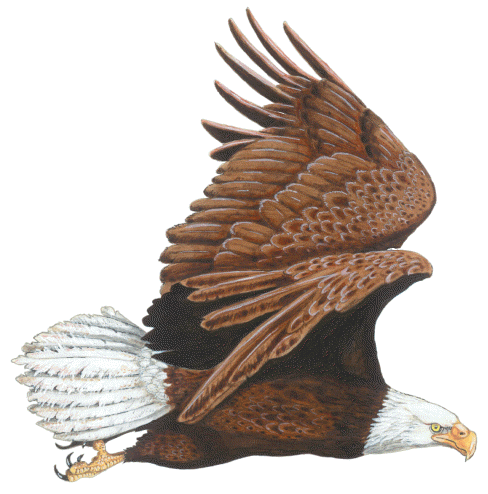|
Flight Evolution |
|
Many experts maintain that some physical characteristics that evolved
increased an animals ability to catch prey. The ones with the
greatest ability survived while those that didn't either evolved other
mechanisms or died off. Most scientists believe that the lighter
bodies, increased maneuverability and stronger muscles, resulted in a
higher jump - and that flight was a byproduct of jumping. Others
argue that the wings were used for gliding down from high places in
order to surprise unwary prey. |
|
 |
|
Compsognathus
longipes - 150-148 MYA |
|
C. longipes lived 20
million years before Sinosauropteryx prima to which it was
closely related. C. longipes was a bird-like dinosaur
that walked on two long thin legs. It had short arms with two
clawed fingers on each hand. No feathers have yet been for the
species. |
|
 |
|
Protarchaeopteryx
robusta - 125 MYA |
|
This small dinosaur was found in China. It is about the size of
a turkey. It had feathers covering its short arms, most of its
body and a fan on its short tail. Its feathers were not
asymmetrical, which indicates that it could not fly. The
feathers probably added in jumping |
|
 |
|
Archaeopteryx
lithographica - 150-148 MYA |
|
Long considered the first
bird, it had asymmetrical feathers and fully developed wigs that it
could lift high above its head. It lacked the strong chest muscles and
short tail essential for prolonged controlled flight. Flying was
probably limited to short hops. |
|
 |
|
Haliaeetus
leucocephalus - Modern day bald eagle |
|
Eagles eat fish, birds and small mammals, which makes them "birds of
prey." They are the modern day raptors and are classified as
such. They have light hollow bones, strong wing muscles,
well-developed feather and a short tail. They are excellent flyers.
|
|
|
|
|
|
|
|
|
Edugraphics.Net | Feenixx Publishing |
|
|
![]()